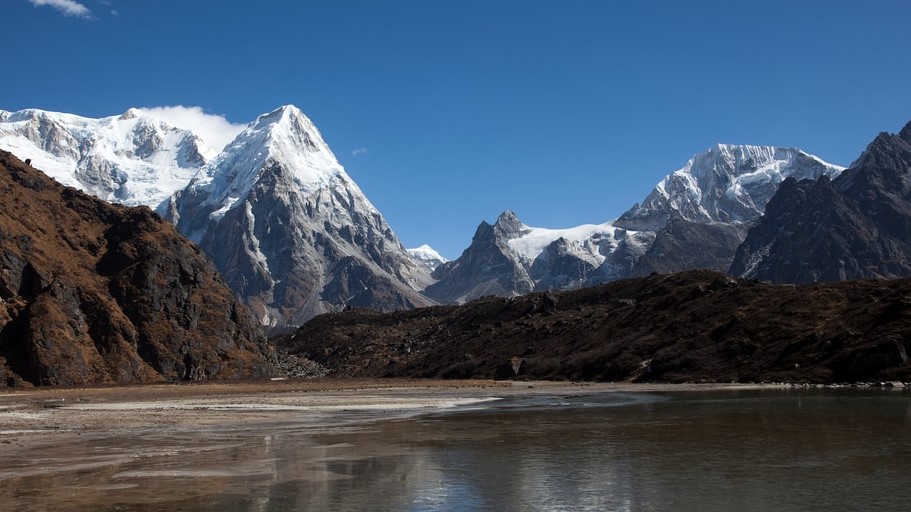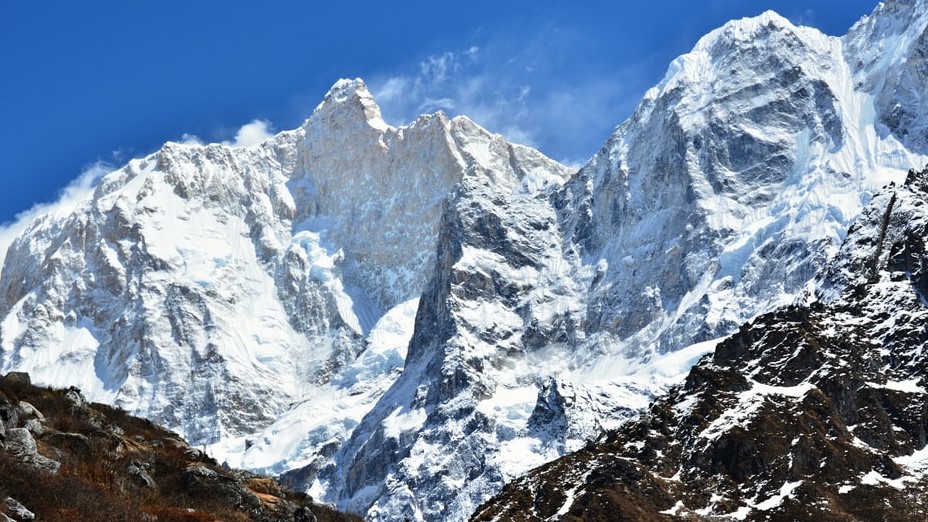BlogInformation on Kanchenjunga Circuit Trekking

10 Nov 2019 snowpath
How worthy Kanchenjunga circuit trekking can be for your next trek? Here we provide some vital information on Kanchenjunga circuit trekking, which can be very useful for trekker. Often the itinerary is also known as Kanchenjunga base camp trekking. A base camp trekking of third highest mountain of altitude 8586m. Trekkers prefer to call the itinerary, Kanchenjunga circuit trek when a sele-la pass joins two base camps namely North and South Base camp. Yet, the trekking region is failing to attract deserving number of trekkers. A far-east location, few promotions comparing to other base camp itineraries, basic lodges, expensive transportation cost, lengthy trekking days are some excuses. Instead, we provide trekker some striking information on Kanchenjunga circuit trekking, to consider this trekking as a next trip.
Less trekker in the region means, a few experiences/information/blogs/facts are circulating in the internet regarding Kanchenjunga circuit trek. The other thing, the trekking itself is not as feasible as Everest and Annapurna to backpacker and single trekker. And general misconception among trekkers that organizing a trip through an agency would be expensive, a reason constricting huge number of trekkers in the region. What a conflicting technique to bury one of the best trekking itineraries. The trekking considered extreme is, because of basic tea houses available in the region. Plus, comparatively the region is remote and quiet.
For mountain lovers, trekking can be exceptional with numerous mountains and peaks. Beside Kanchenjunga main (8586m), there are four other flanks namely, Kanchenjunga West (8505m), Kanchenjunga Central (8482m), Kanchenjunga South (8494m) and Khambachen (7903m). Other notable peaks are Mount Jannu (7710m), Mount Kabru(7412m), Rathong peak (6678m) and Kokthang peak (6148m). For culture enthusiastic trekker, this is the one trekking region of Nepal, they cannot miss. The widely diversified ethnic community in the region displays rich culture and tradition of the people.
Information on Kanchenjunga Circuit Trekking about Geography and Climate
Situated in Far-east region, trekker can experience entirely different scenarios in Kanchenjunga trekking whether it is geography, climate or people. Comparing to other base camp trekking of Nepal, Kanchenjunga region has various climatic zone starting from sub-tropical to snowline. More like the flavor of circuit trekking of Nepal. Unlike in Everest, where trekker lands in forested zone of upper temperate (Lukla) at 2860m, for Kanchenjunga, trek starts from as low as 920m.
Gradual change in altitude and geographical feature during trekking is the best part trekker appreciates. Trekker can enjoy walking in between tropical and temperate forest in lower trekking region. Plus, the terraced farmlands and typical Nepali villages in lower region are some attractions. The alpine and sub-alpine region has small bushes and open meadows that provide unrestricted views of mountains and peaks. The snowline is rocky and icy, where a trekker can admire towering mountains and peaks.
Trekker experiences hot and humid climate in sub-tropical and tropical regions. Rare in trekking season, but sometime trekker may encounter rainfall in these lower regions. The Temperature becomes mild and pleasant once trekker enters temperate zone. As the altitude increases, there would be fewer chances of rainfall. Alpine and snowline region has cold temperature with constantly changing climate. Generally, morning and afternoon remain calm and clear while evening time can be cloudy.
People and Culture in Kanchenjunga Circuit Trekking
Specifically, the eastern region of Nepal has very diversified ethnic community under umbrella of Kirati. Rai, Limbu, Sunuwar and Yakhha are the sub-categories that dominate the eastern region of Nepal. Each community rich with its own culture and traditions. Even though the lower region of trekking has mixed community living together, some villages and habitats are confined only with single community of these indigenous people. Especially, in the hilly part of trekking. The upper region of the trekking has Sherpa and Bhot people with their own values and traditions following Buddhism.
Though it is hard to see extensive lifestyle, culture, tradition of these people in such a short period of trekking, trekker can still experience some amazing aspects. Especially day to day activities like language, clothing and fooding. Animisms is the main theme of religion. However, numerous subcategories among the same ethnic community make hard to define exact culture and tradition they follow. Livelihood of people depends upon agriculture and animal husbandry. It is interesting, rather than internal migration within Nepal for occupation and study, they migrate to US, UK, Hongkong, and other foreign countries.
Extended Information on Kanchenjunga Circuit Trekking
We provide some valuable trekking information on Kanchenjunga Circuit Trekking about itinerary, transportation, permit including lodging/fooding and difficulty level.
Itinerary information on Kanchenjunga Circuit Trekking
There are some options available, including non-standard way to do Kanchenjunga trekking. However, the focal point for itinerary would be either to include or to exclude Sele-La pass that joins two base camps. First option would be, trekking only to Northern base camp and retracing down same path. Second, trekking to Northern Base camp and follow the route of Sele-La pass and descend down, excluding southern Base camp. Third, trekking only to Southern Base camp and descending through same trekking path. Other can be excluding Northern base camp but including Southern Base camp and Sele-La pass.
The most popular, standard and effective way of trekking is, to include both the Base camps through Sele-La pass and making a circuit (round) trek. Trekker can start either anti-clockwise first trekking to southern base camp, or from clockwise direction trekking the Northern Base camp in first hand.
Our standard itinerary for general trekker is of 27 days including few contingency days, where there is possibility of shortening trekking by couple of days. But, that would not be too bright idea. The time-consuming transfer to start trek, and to return Kathmandu after completion of trek can be exhausting to trekker. However, can finalise the itinerary upon sharing few emails and messages.
Information on Kanchenjunga Circuit Trekking about Permit and Fees
Trekkers need to obtain three types of permits to trek in Kanchenjunga. Each permit is non-transferable and non-refundable.
Restricted Area Permit: Comparing the beauty of Kanchenjunga trekking the restricted area permit fee is relatively low. USD 10 per week per person. There should be minimum 2 person/trekker to issue the restricted area permit. Hiring guide is mandatory to trek in restricted trekking region of Nepal.
Kanchenjunga Conservation Area Permit (KCAP): Another permit requirement to trek in the Kanchenjunga region. It costs USD 20.00 for one entry.
Trekkers Information Management System (TIMS): It costs USD 10.00 per person per entry. If trekker decides to issue on their own, it costs USD 20.00.
Information on Kanchenjunga Circuit Trekking about Transportation
Transportation is one of the biggest hurdles for Kanchenjunga trekking. The transfer time to start and end the trekking is relatively lengthy to and from Kathmandu. There are some irregular flights to Suketar from Kathmandu, if available that would be the best option. The other option is to fly Bhadrapur, and drive in off-road to Taplejung to start the trek. This is the general option what most trekker does. Next, the least favorable option would be to drive all the way to Taplejung from Kathmandu. We suggest this idea only in case of no flights.
Adding few contingency days in the Kanchenjunga trekking is to tackle unwanted situations that might arise during lengthy transfer of trekker to start and end trek. Plus, relaxing in Kathmandu for a day before boarding long international flight is always a nice idea.
Best time to start Kanchenjunga circuit Trekking

Like any other trekking, Kanchenjunga trekking has two windows. Spring in between the month of March-May and Autumn in between the month of September-October. Of course, Rainy season is not good for trekking and during the Winter, the local people of upper trekking region descends down to lower region. Which makes difficult for lodging and fooding, unless you are doing camping trekking. In fact, limited tea houses and local lodges means trekking guide relatively depends on the information provided by local people whether the local lodges/ tea houses are open or not in upper trekking region.
Information on Kanchenjunga Circuit Trekking about Food and Accommodation
Food and Accommodation in Kanchenjunga Trekking are basic. This is the most common information what most of the trekker finds. But how basic? It generally depends on the expectation of trekker. However, it is better to keep expectation as low as you can. Noodles, spaghetti, dal bhat (rice lentils), tea, soup are available. Seeking the standard of Everest, Annapurna would certainly disappoint trekker. However, there is no doubt whatever the thing available is certainly fresh and healthy. Your bed would be enough nice and tidy to spend a night.
If trekker likes to increase the standard of trekking, camping trekking would be the other option. Besides, you need not rely whether tea house is open or not in certain region. This can also help to make itinerary slightly flexible. But this is highly expensive. Half camping and half tea house trekking can be another alternative, which may increase the trekking cost slightly. If tea-houses are closed, trekker can use camping equipment as alternative solution to complete the trekking.
Information on Kanchenjunga Circuit trekking about Difficulty Level
If trekker slightly compromises the luxury and understands the lengthy transfer in between Kathmandu and Taplejung, the trekking itself is not as hard and difficult as it sounds. Trekkers do not gain exceptional high altitude in single day. The itinerary is well-balanced for day to day trek. Which is a general case for most of the trekking itineraries in Nepal. However, amateur trekkers are not advised to make Kanchenjunga trekking their first choice unless they are physically and mentally strong and has enough information about the trekking.
